On this page
Rails, Crakes, Coots, etcThis page lists books about the rails, crakes, gallinules, coots and moorhens. The books are listed in order of publication date with the most recent at the top.
Rail species
Family: Rallidae
In the UK
Water Rail
Rallus aquaticus
Common Moorhen
Gallinula chloropus
Common Coot
Fulica atra
Corncrake
Crex crex
Spotted Crake
Porzana porzana
Rare UK visitors
Sora
Porzana carolina
Little Crake
Porzana parva
Baillon's Crake
Porzana pusilla
Allen's Gallinule
Porphyrio alleni
American Purple Gallinule
Porphyrio martinica
American Coot
Fulica americana
Worldwide
There over 130 species of Rallidae worldwide.
|
|
|
|
The Woodhen: A Flightless Island Bird Defying ExtinctionClifford Frith
CSIRO
2013
"This book tells the fascinating success story of saving the flightless Woodhen of Lord Howe Island. This unique large rail, an iconic and highly endangered Australian bird, was at the very brink of extinction with just 15 individuals found in 1980, when bold and risky actions were taken to save it. The book begins with the discovery and ecology of Lord Howe Island. It then details the history of the Woodhen, its place among the rails and their evolution of flightlessness, the planning, implementation and trials, tribulations and successes of the captive breeding programme and the way in which the wild population recovered. The ecology, behaviour and breeding biology of this unique flightless island rail are also discussed. The text is accompanied by numerous photographs and drawings."
|
Buy from amazon.co.uk 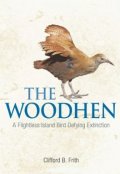
|
|
International Single Species Action Plan for the Conservation of the
White-winged Flufftail Sarothrura ayresiCompiled by The Africa Partnership Secretariat of BirdLife InternationalEdited by: Eric Sande, Paul Kariuki Ndang'ang'a, James Wakelin, Mengistu Wondafrash, Malcolm Drummond and Sergey Dereliev
Technical Series No. 38
AEWA
(CMS Technical Series No. 19)
2008
Funded by The Italian Ministry for the Environment, Land and Sea. Produced by BirdLife International Africa Partnership Secretariat
in cooperation with Ethiopian Wildlife and Natural History Society, Middelpunt Wetland Trust and Ezemvelo KZN Wildlife.
From the executive summary: "The White-winged Flufftail Sarothrura ayresi is a globally threatened species (IUCN Red List category: Endangered), with a declining population estimated at 700 individuals. It occurs in Ethiopia (at three sites, the only known breeding sites), Zimbabwe (three records) and South Africa (known from nine sites). The main threats to the White-winged Flufftail include grazing and cutting of sedges and grasses during the breeding season; increased transformation of natural habitat to cultivation; inundation of wetland habitat through the construction of dams; natural resource use by local people; habitat trampling by livestock; and afforestation with eucalyptus. There is limited information on the population status and ecology of the species, which hampers implementable conservation action."
|
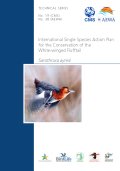 |
|
International Single Species Action Plan for the Conservation of the Corncrake Crex crexCompiled by Kees Koffijberg & Norbert Schaffer
Technical Series No. 9
AEWA
(CMS Technical Series No. 14)
2006
From the executive summary: "The Corncrake is considered 'near threatened' worldwide. It is included in Annex I of the EU Bird Directive, Appendix II of the Bern Convention and Appendix II of the Bonn Convention. Corncrakes breed widely across Eurasia, from the Atlantic to western Siberia. The core wintering area is situated in the savannas and other grasslands in eastern and south-eastern Africa. The global population is estimated to number 1.7 to 3.5 million singing males, including estimates for countries where complete national surveys are not feasible. Due to the lack of sufficient data, trends are rather poorly known in many (important) countries in the breeding range, especially in eastern Europe and Asia. Based on new information from these countries, the species recently has been downlisted from 'globally threatened' to 'near threatened'. Available data on trends suggest declines of 20-50% in the recent decades in large parts of the breeding range, most pronounced in western European countries. From the mid-1990s onwards, however, several countries have reported increases."
|
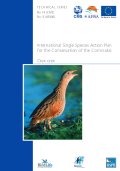 |
|
Light and Flight: A Hebridean Wildlife and Landscape SketchbookPhilip Snow
Brown and Whittaker Publishing
2006
"From the cliffs of the Butt of Lewis to the granite outpost of Ailsa Craig, Philip Snow has captured in his stunning watercolours the whole coastline of the Hebrides. His studies of birds are the product of a lifetime of observation in the field. Most of his pictures come with field notes and anecdotes that transport the reader to the world of soaring eagles and rasping corncrakes. No other book has presented the rich wildlife of the islands so intimately and with such skill."
|
Buy from amazon.co.uk 
|
|
Evolution of Flightlessness in Rails (Gruiformes: Rallidae): Phylogenetic, Ecomorphological, and Ontogenetic PerspectivesBradley C. Livezey
Ornithological Monographs 53
American Ornithologists' Union
2003
|
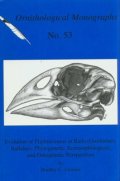 |
|
The Takahe: Fifty Years of Conservation Management and ResearchEditor: William G. Lee and Ian G. Jamieson
Otago University Press
2001
"The takahe is a large, flightless, herbivorous bird found in New Zealand. Nine contributions from the joint conference of the Ecological Societies of Australia and New Zealand reflect on attempts to conserve the takahe since its rediscovery (after presumed extinction) in 1948. A sampling of topics includes the origins and prehistoric ecology of takahe; population trends, dynamics and problems of fjordland takahe; and captive rearing."
|
Buy from amazon.co.uk 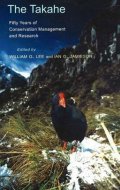
|
|
CorncrakesScottish Natural Heritage and The Royal Society for the Protection of Birds
Naturally Scottish Series
1999
"This shy, secretive bird is seldom seen but often heard. Its distinctive, rasping call evokes memories of a more rural past. Thanks to the efforts of the Scottish Natural Heritage (SNH) and RSPB, numbers of this threatened bird are again on the increase. Part of a series of colourful booklets looking at different aspects of this rich natural heritage from individual species, and even the genetic variations within them, to whole groupings within different environments."
|
Buy from amazon.co.uk 
|
|
Rails: A Guide to the Rails, Crakes, Gallinules and Coots of the WorldBarry Taylor and Ber van Perlo
Pica / Christopher Helm
1998
Complete guide to the 145 species of rail found throughout the world, including the Moorhen, Coot, Water Rail and Crakes of the UK. This book is the first to give comprehensive information on field identification covering all species and races including immature and juvenile plumages of many species. It also provides a detailed summary of our current knowledge of all aspects of rail biology and behaviour. There is also discussion of distribution, status, habitat requirements, and current threats, and conservation priorities. Includes 43 colour plates and distribution maps.
|
Buy from amazon.co.uk 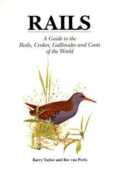
|
|
Crex Crex: Corncrake Resource PackCatherine A. O'Connell
Irish Peatland Conservation Council
1998
A 40 page book designed to help teachers and interested individuals learn more about corncrake conservation and farming in Ireland. The Corncrake Resource Pack is geared towards upper primary school children and Junior Certificate Science and Geography students. The pack is laid out in two parts. Part 1 is a facts and information resource on Corncrakes, farming and wild flower meadows. Part II contains related teaching ideas and activities that will help students develop their research, interviewing, field studies and research skills. The pack is fully illustrated and photocopiable. The approach adopted in this pack is positive - while focusing attention on threatened species and farming habitats, it demonstrates how pupils can manage an uninteresting patch of grassland in the school grounds to produce a thriving wild flower nature reserve.
|
Buy from amazon.co.uk 
|
|
The Status And Conservation Of Rallids In South Africa: Results Of A Wetland Survey In 1995/96South African Palustrine Wetlands: Results Of A Survey In Summer 1995/96P. Barry Taylor
ADU Report 23 / ADU Report 24
Avian Demography Unit, University of Cape Town
1997
|
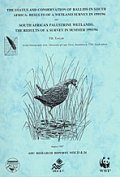 |
|
Shadowbirds: Story of a Quest for RailsWilliam H. Burt
The Lyons Press
1994
A personal account of the author's quest to photograph the elusive bird, the rail. Includes colour photographs.
|
Buy from amazon.co.uk 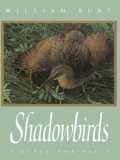
|
|
The Wading Birds of North America: A Definitive Work Covering The United States And CanadaAllan W. Eckert
Paintings & Drawings: Karl E.Karalus
Weathervane Books / Random House
1987
Covers Herons, egrets, bittern, ibises, spoonbills, flamingos, cranes, limpkins, rails, gallinules, and coots.
|
Buy from amazon.co.uk 
|
|
The Coot in West SiberiaAI Koshelev
Pensoft
Language: Russian
1984
A treatise on the biology, ecology, distributiion, economic importance and conservation of the Common Coot (Fulica atra). Chapter headings: Conditions of the Coot occurrence; Material and method; Distribution and disposal; Intra-species and inter-species relations; Seasonal cycle of life; Feeding; Structure of species and separate populations; and Number, use and conservation one of the commonest and popular waterfowl in Siberia.
|
|
|
Rails of the WorldS. Dillon Ripley
Illustrations: J. Fenwick Lansdowne
David R. Godine Publisher
1977
A Monograph of the Family Rallidae. This book was published in 1977 in a limited edition of 400 copies. The book includes 41 detailed paintings by J. Fenwick Lansdowne.
|
Buy from amazon.co.uk 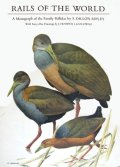
|
|
Natural History Of The King Rail
Brooke Meanley
B/W photographs, illustrations and maps
North American Fauna, Number 67
Bureau Of Sport Fisheries And Wildlife
US Department Of The Interior
1969
From the introduction: The King Rail {Ralius elegans Audubon), largest of North American rails, is indeed an elegant bird, as its Latin name implies. Its striking appearance (fig. 1), secretive nature, and association with a variety of wetland habitats make it a favorite of bird students and rail hunters. The King Rail is found in most of the eastern half of North America, from the Atlantic coast to the Great Plains and from the Gulf of Mexico to southern Canada. It is most abundant in the fresh and brackish tidal marshes of the Atlantic and Gulf Coastal Plain, the domestic ricefields of Arkansas, Louisiana, and Texas, and the marshes of southern Florida. It is fairly common in parts of the Midwest Prairie and Great Lakes region. I began my studies of this interesting bird in 1950 in the Arkansas ricefields, and have continued them until 1967, both in the field and in the laboratory. Many of the field observations, particularly those of courtship behavior, were made from an automobile which served as an admirable mobile blind. Such a blind was used to follow courting rails along roadside ditches in Arkansas and Louisiana, making it possible to study the detailed nuptial courtship behavior of 20 different pairs and the prenuptial behavior of four. Under these conditions it was possible also to distinguish the sexes by their behavior rather than by their size differences, which are sometimes difficult to ascertain in the field.
|
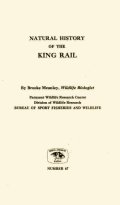
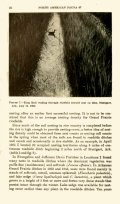
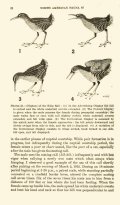 |
|
Three Studies In Bird Character: Bitterns, Herons and Water RailsWilliam Percy
Country Life
1951
A 64 page study with many illustrations.
|
Buy from amazon.co.uk 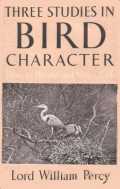
|
|
A Waterhen's WorldEliot Howard
Drawings: G.E. Lodge
Cambridge University Press
1940
A 64 page study with many illustrations.
|
Buy from amazon.co.uk 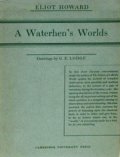
|
|
Catalogue Of The Fulicariae (Ralidae and Heliornithidae) And Alectorides (Aramidae, Eurypygidae, Mesitidae, Rhinochetidae,
Gruidae, Psophiidae, And Otididae) In The Collection Of The British MuseumCatalogue Of The Birds In The British Museum, Volume XXIII
R. Bowdler Sharpe
9 colour plates: J.G. Keulemans
Printed By Order Of The Trustees
Sold by: Longman & Co.; B. Quaritch; Kegan Paul, Trench, Trubner & Co.; and at the British Museum (Natural History)
1894
Preface: "The numbers of the species of the nine families treated of in the twenty-third volume, and of the specimens at present in the Collection, are as follows: Rallidae, 187; Heliornithidae, 4; Aramidae, 2; Eurypygidae, 2; Mesitidae, 1; Rhinochetidae, 1; Gruidae, 19; Psophiidae, 6; Otididae, 30. In the first category 29 forma are included which are considered by the author to be of only subspecific rank, while 33 species and subspecies are still unrepresented in the Collection of the Museum. Beside the 49 types of recognized species, the Collection contains 27 other typical specimens which are now relegated to the synonyms. As in the preceding volumes, the series of specimens of the American and Indian species are derived chiefly from the Hume, Tweeddale, and Godman-Salvin Collections; but they have been largely supplemented by a generous donation from Mr. Seebohn. For other additions to this volume the Trustees are indebted to the Right Hon. Lord Lilford, Colonel Irby, Mr. H. 0. Forbes, Mr. P. L. Sclater, and Mr. F. W. Styan."
|

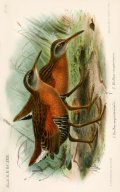
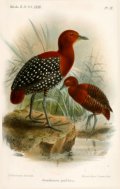 |
|